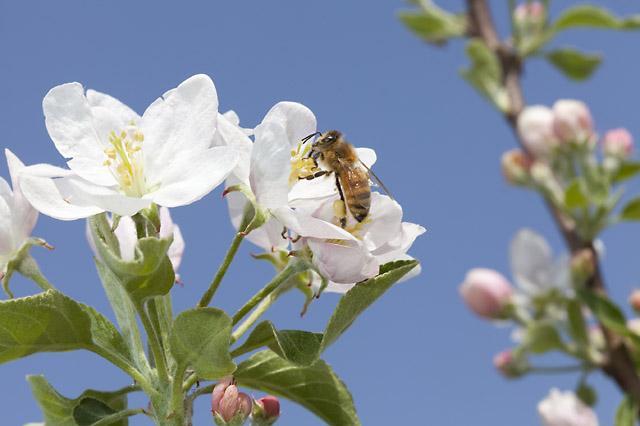USDA: Annual Bee Losses Total 42 Percent
 BELTSVILLE, Md., May 13 (UPI) — A new report from the U.S. Department of Agriculture suggests honeybee populations remain in trouble. Beekeepers lost an average of 42 percent of their managed honeybee populations from April 2014 to April 2015.
BELTSVILLE, Md., May 13 (UPI) — A new report from the U.S. Department of Agriculture suggests honeybee populations remain in trouble. Beekeepers lost an average of 42 percent of their managed honeybee populations from April 2014 to April 2015.
Researchers with USDA’s Agricultural Research Service say the losses keep the costs of doing business up, making pollination services for agricultural industries painfully high. According to the agency’s report, almond growers in California shelled out a whopping $292 million for pollination services in 2012.
For the first time, summer losses actually outpaced winter losses. Beekeepers, or apiarists, reported losing 23.1 percent of their bee colonies during the past winter. Comparatively, keepers reported an average loss of 27.4 percent during the summer of last year.
“We traditionally thought of winter losses as a more important indicator of health, because surviving the cold winter months is a crucial test for any bee colony,” Dennis van Engelsdorp, an assistant professor of entomology at the University of Maryland, said in a press release. “But we now know that summer loss rates are significant too. This is especially so for commercial beekeepers, who are now losing more colonies in the summertime compared to the winter. Years ago, this was unheard of.”
Total losses from April 2014 to April 2015 were up nearly 8 percent from the year prior, but the declines weren’t as bad as the rates seen when colony collapse disorder was first discovered.
“The winter loss numbers are more hopeful especially combined with the fact that we have not seen much sign of Colony Collapse Disorder for several years, but such high colony losses in the summer and year-round remain very troubling,” said study co-author Jeff Pettis, senior entomologist at the ARS Bee Research Laboratory in Beltsville, Maryland. “If beekeepers are going to meet the growing demand for pollination services, researchers need to find better answers to the host of stresses that lead to both winter and summer colony losses.”
Previous research has identified a number of potential causes for the decline of bee populations, both wild and managed — including habitat loss, disease, parasites and pesticides.






